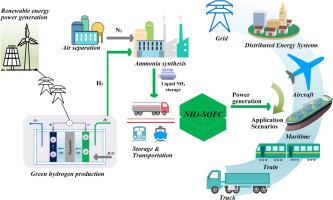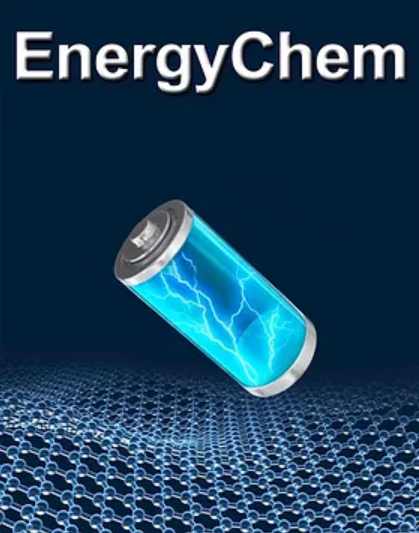绿色氨利用途径:用于高效发电的集成氨固体氧化物燃料电池系统
IF 23.8
Q1 CHEMISTRY, MULTIDISCIPLINARY
引用次数: 0
摘要
氨(NH3)能量密度高(18.6 MJ kg-1,含H2 17.6 wt%),储运成熟,是一种很有希望储存和运输可再生能源的能量载体。氨燃料固体氧化物燃料电池(NH3-SOFC)由于其高效率、接近零的二氧化碳排放和灵活的集成,显示出多种清洁能源应用。本文通过对NH3-SOFC技术的工作原理、系统集成和成本竞争力的研究,阐述了NH3-SOFC技术走向绿色氨经济的现状和前景。技术经济分析结果表明,NH3-SOFC的平准化电力成本(LCOE)约为0.24美元千瓦时-1。此外,由于氨具有无碳和低可燃性的特点,它作为绿色航运燃料的潜力很大,同时需要行业标准和大规模应用场景。研究还发现,NH3-SOFC的大规模应用很大程度上取决于资本成本的降低、电极材料的改进和体积功率密度的提高。本文章由计算机程序翻译,如有差异,请以英文原文为准。

A green ammonia utilization pathway: Integrated ammonia-solid oxide fuel cell systems for efficient power generation
Ammonia (NH3) is a promising energy carrier to store and transport renewable energy due to its high energy density (18.6 MJ kg-1, containing 17.6 wt% H2) and mature storage and transportation. Ammonia-fuelled solid oxide fuel cells (NH3-SOFC) show multiple clean energy applications due to their high efficiency, near-zero CO2 emissions, and flexible integration. This work delineates the current status and prospects of integrated NH3-SOFC technology towards a green ammonia economy by investigating its operating principle, system integration, and cost-competitiveness. Technoeconomic analysis results suggest that the levelized cost of electricity (LCOE) for NH3-SOFC is approximately 0.24 $ kWh-1. In addition, ammonia has demonstrated a high potential as a green shipping fuel because of its carbon-free and low flammability characteristics, while necessitating industry standards and large-scale application scenarios. It has also been indentified that the large-scale application of NH3-SOFC largely depends on the reduction in capital cost, electrode materials improvement and volumetric power density increase.
求助全文
通过发布文献求助,成功后即可免费获取论文全文。
去求助
来源期刊

EnergyChem
Multiple-
CiteScore
40.80
自引率
2.80%
发文量
23
审稿时长
40 days
期刊介绍:
EnergyChem, a reputable journal, focuses on publishing high-quality research and review articles within the realm of chemistry, chemical engineering, and materials science with a specific emphasis on energy applications. The priority areas covered by the journal include:Solar energy,Energy harvesting devices,Fuel cells,Hydrogen energy,Bioenergy and biofuels,Batteries,Supercapacitors,Electrocatalysis and photocatalysis,Energy storage and energy conversion,Carbon capture and storage
 求助内容:
求助内容: 应助结果提醒方式:
应助结果提醒方式:


